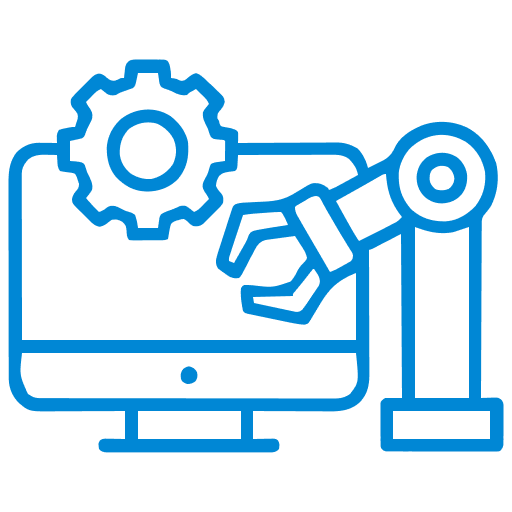Embedding data and analytics into your enterprise
WRITTEN BY
IDC Asia/Pacific recently reported that the pandemic has created more urgency for organizations to have data-driven means to support operational resilience and revenue generation.
Though COVID-19 has led to a drop in the number of ICT investments, technology resiliency has helped businesses in combating the impact of the pandemic. Enterprises should have a data strategy in place to remain competitive in Asia/Pacific as per IDC.
Having said that, stitching Data and Analytics (D&A) into every function of an enterprise is a daunting task in itself. Most organizations suffer in bringing this change because of three primary reasons:
1) Data is not considered an asset in the Organization
2) Absence of D&A thought leaders to lead such a change
3) Continuation of ‘Instinct’ driven decision making instead of ‘Data’ driven
In a study, Gartner estimates D&A-based initiatives falter 60% of the time, and reasons for many of these failures are common across Large and Small enterprises.
To thrive and remain competitive, companies should acknowledge the internal resistance to change and brainstorm on the right approaches, even if it needs hiring the right D&A leader or coaching partner.
Some of the key strategies to the device and achieve successful threading of data-driven enterprise are:
A mind-shift in leadership across departments
In a complex business scenario, integrating or transforming business units into data-driven enterprises depends heavily on getting the buy-in from the leaders of these respective units.
The D&A investment chain suffers if the leaders don’t evangelize to the new ways of looking at decision-making (i.e., decisions based on data).
Changing executives thought process from instinct-driven to evidence-driven is not something that can be achieved overnight with small change management or training. It needs to be embedded in the way leaders think and work every day.
This includes inculcating a habit of data ownership and using data to guide any process and quality improvement.
Some of the leaders may be early adopters. In order not to lose momentum, it’s extremely important to award early adopters, create consistent engagements and establish governance across business units.
Experiment to fail with low risk and learn faster
Experiments navigate us to our eventual destination through roadblocks, twists, and turns. Trying new things, being open to new initiatives, new technological innovations are critical to moving forward in terms of innovating organizational practices with data.
Here “Fail fast” does not imply a lack of commitment to a mission or goal, but on the contrary, indicates a willingness to experiment in the process, learn quickly from the results, and make adjustments to achieve better.
One approach can be to start with a business function that poses a low risk due to experimentation so that it does not demotivate the entire organization.
For example – a company may begin with its digital marketing unit, gather various historical data sets to repurpose the pitch or campaign, and measure the effectiveness by assessing the outcomes from a sales standpoint.
Internal enabling functions like ‘marketing’ can be a unit to experiment for one enterprise while ‘HR’ for others. This will help to replicate the learnings and experiences to other projects and business functions in an enterprise.
Implement the technology infrastructure that can enable data intelligence
One must be mindful of the fact that data can only tell us the aspect of ‘what is the problem in a business function’, but it can’t tell us ‘Why is this problem’ without applying suitable technology and science on the data.
The choice of technology will also have a great impact on how enterprises can unleash data from silos and integrate it with other data sources across departments to create useful and meaningful insights.
In the current unprecedented COVID scenario, many organizations are adopting cloud-based solutions to reduce IT infrastructure costs and enable collaboration with the remote workforce.
The cloud-based D&A solution helps in delivering insights across the board, especially if consumers of the data are geographically dispersed.
Another consideration in choosing D&A technology can be how it enables data to be used effectively by advanced technologies such as artificial intelligence, machine learning, and augmented reality.
Such tools can play an important role in generating more meaningful insights and integrating data into operations in new ways.
Get the right teams and skillset to enable data to value-
In addition to the right technology, harnessing value from data depends on the right teams with the right skill sets. For a long-lasting solution it is imperative, to begin with, a good design & architecture of data and analytics, and to enable this, companies should align enterprise data architects and empower data teams.
While solving the piece of the puzzle companies have many challenges that exist across the board and need some thought parade. If an enterprise has minimal D&A capabilities or inexperienced data leads across the board it is bound to struggle.
Many large organizations are still dependent on legacy technical solutions and tightly coupled architectures thus not letting IT teams upskill or leverage skilled D&A resources. Such scenarios usually are detrimental to growing D&A practices within the organization.
Conclusion
Finally, conducting a business unit-wide assessment before D&A investment, and rebuilding the technology platform in a way that leverages agility and support would be ideal.
Leaders’ mindset change, Startup culture on experimentation, properly structured systems, processes, and people devoted to D&A can be a competitive advantage for an organization in embedding data and analytics practices.
Once an enterprise addresses these strategies, it can create potential to achieve significant future savings, realize the D&A investment and transform into an intelligent enterprise.
To sum up the value of data- in the words of Thomas H. Davenport (an academician and author specializing in data & analytics), ‘We live in a world awash with data. Data is proliferating at an astonishing rate—we have more and more data all the time, and much of it was collected in order to improve decisions about some aspect of business, government, or society. if we can’t turn that data into better decision making through quantitative analysis, we are both wasting data and probably creating suboptimal performance.’

Co-innovation at Scale: How Life Sciences Enterprises Can Leverage Strategic Partnerships for Sustained Innovation
Across the Life Sciences industry, companies face pressure to modernize operations while maintaining compliance and quality standards. Complex supply chains, regulatory needs, and the move toward personalized care demand innovation across clinical, manufacturing, and commercial functions. Managing fragmented data and ensuring audit-ready processes remain key challenges. Digital transformation powered by scalable, intelligent platforms like SAP BTP enables enterprises to connect data, automate processes, and enhance decision-making with agility and efficiency.

How Can Consumer Products Brands Use SAP BTP to Build a Trusted Data Foundation for Faster Product Launches?
Consumer product companies face intense competition, evolving consumer expectations, demand for personalization, and sustainability goals. To stay ahead, brands must deliver innovative products faster with precision. This requires a unified data foundation connecting design, manufacturing, supply chain, and marketing. When data is siloed, decisions slow and inconsistencies grow. With SAP BTP, brands can centralize data, enhance accuracy, and drive agility, enabling faster, more confident decisions and accelerating innovation across the consumer products value chain.

















































